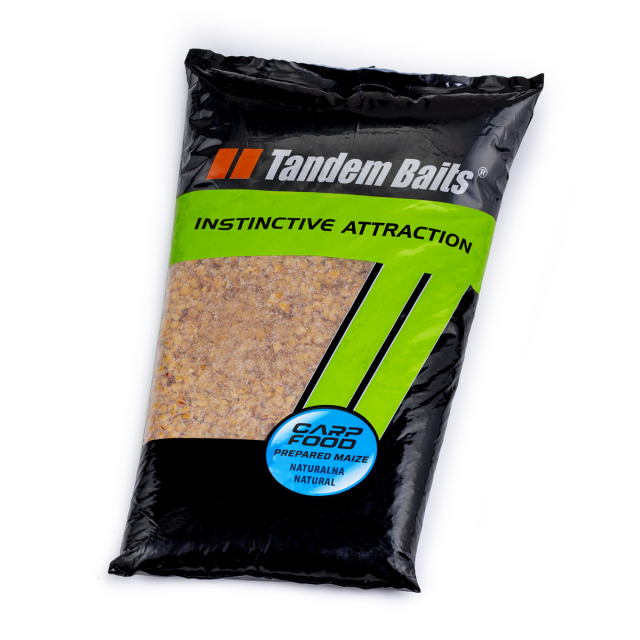
Seeds
The power of seeds
Seeds - so small, yet they can do wonders. What is it about them that makes fish go crazy?
Wondering what to use for effective carp fishing? Probably the first thing that comes to your mind are boilies, which are really quite effective. However, in order to stand out in a fishery you sometimes have to think outside the box and use a lure that is reliable, natural and well-known to fish. We are talking about seeds!
Why do carp like grains?
All kinds of seeds, nuts and grains are natural food for fish, which does not arouse dangerous suspicions in water. Apart from that, they contain high levels of calories, carbohydrates, fats including Omega 3, and quite a lot of protein. The grains also have a texture that meets the carp's behavioural needs such as biting, hardness and palatability.
This makes the grains an ideal groundbait that will work in any event - whether on rivers, wild water or commercial!
The grains, seeds and nuts most commonly used in carp baiting are:
-
Tiger nuts
-
Peanuts
-
Maize
-
Pulses
-
Chickpeas
-
Beans
-
Hemp
-
Turnip rape
-
Buckwheat
They can be used separately, as well as in the form of mixes or additions to bait.
How do carp feed on grains?
It is worth reading this section, because the knowledge you have gathered may be a key element of your well-chosen baiting tactics.
Carp are very flexible creatures when it comes to feeding. They are able to adapt their diet depending on the substrate they feed on and the food available. Each type of grain can affect the fish differently, and delving deeper into this subject can be the key to angling success.
Which faction to choose?
Choosing a tactic is not as simple a matter as it might seem. At the first stage we should answer the question what fish we are aiming at. Of course everyone wants to get the biggest specimens, but this requires the right approach.
Among seeds our choice oscillates between two fractions: fine and coarse. And although it may seem unbelievable, each of these fractions has its individual part in tempting big carp. Using a coarser seed fraction will certainly help you to fish selectively when you want to avoid small fish strikes and are targeting specific specimens. However, small seeds can also make a quite important contribution.
Using smaller seed makes the carp work hard to find it and eat every grain, which also takes a lot of time and keeps them at the fishing point for longer. And this increases your chances of a bite.
The longer a fish searches for food, the better for you.
When a carp feeds on small feed, it inevitably sucks up many inedible organic and inorganic components such as leaves, sand or small stones. The carp must sort through all these elements, excreting the inedible products and consuming the edible ones. When feeding on small bait, the carp extends its mouth and touches the substrate, sucking the material into its mouth, where the first stage of sorting and spitting out inedible elements takes place. The food then moves to the mouth where further sorting takes place with the help of the so-called palate organ, which is made up of elastic fibres, muscle tissue and fat cells, and is covered on the outside with taste buds. When the palate organ tastes something edible, the carp holds the food and excretes the inedible parts through the gill opening. The edible parts are then passed back to the pharyngeal teeth where they are crushed and ready for digestion.
This process occurs constantly as the fish feed on small baits such as hemp seed or pellets, moving around the baited area and filtering the food. So it takes carp a lot of time to sort through the small food and keep them in the baited area, which makes it easier to keep the fish close to our set. And this proportionally increases our chances of a bite.
Seeds vs PVA
A good way to feed seeds into the baited area is to place them in PVA. This will allow you to spot-bait a selected area with small amounts of bait and in very close proximity to your rig. To place grains in PVA, just drain them, salt them well and mix with oil (edible, fish) in the amount of 50 ml per kg. This prevents the PVA from dissolving prematurely due to water seeping from the grains.
An economic advantage of seeds - good price!
Using seeds for angling purposes is also a great cost saver, especially if you like to feed "in bulk". In this case we can lower the costs of baiting while keeping good quality of the groundbait. Corn can be a great example here. Not only carp are crazy about it, but also you can buy it in low price. A perfect solution!













